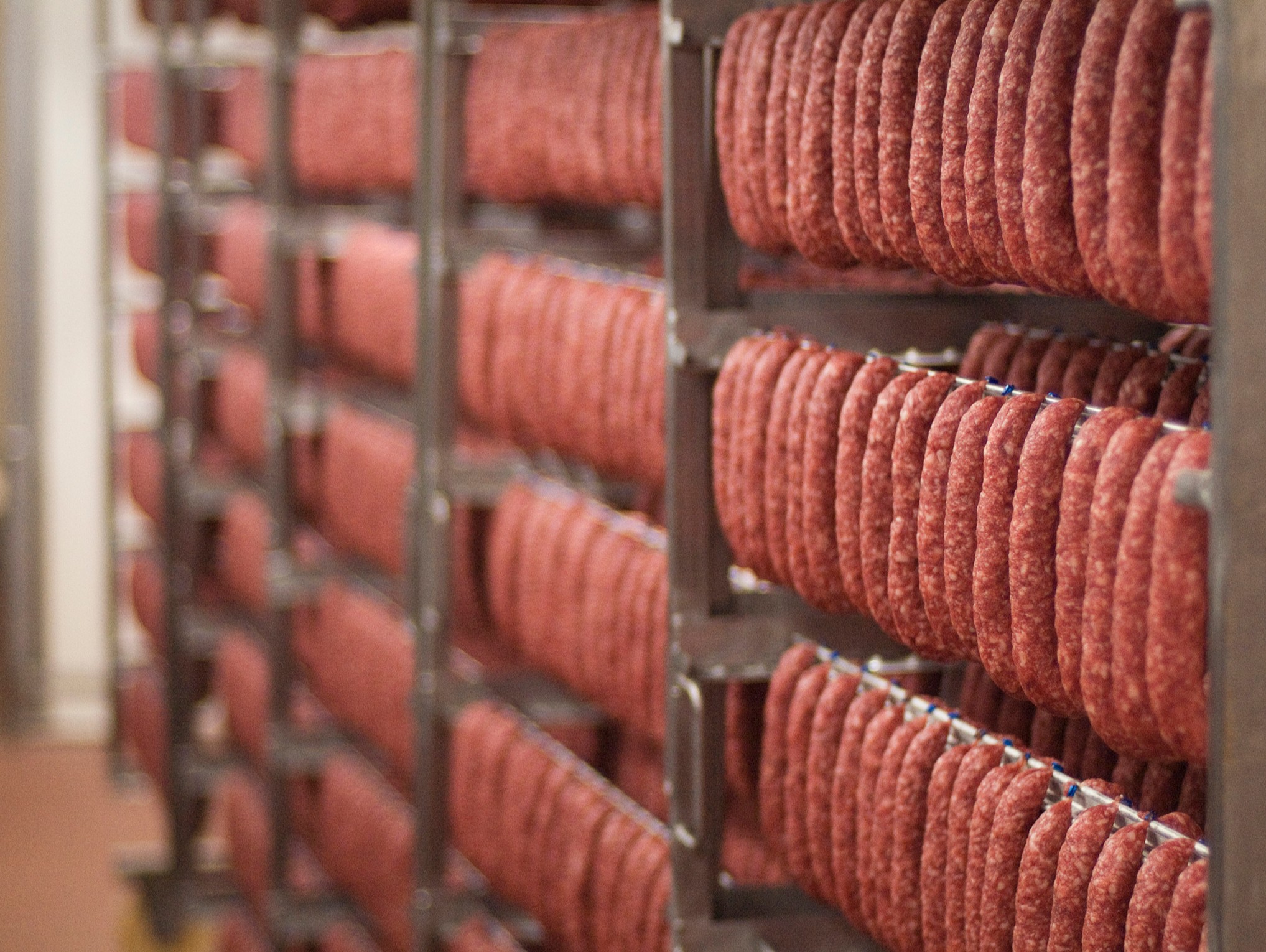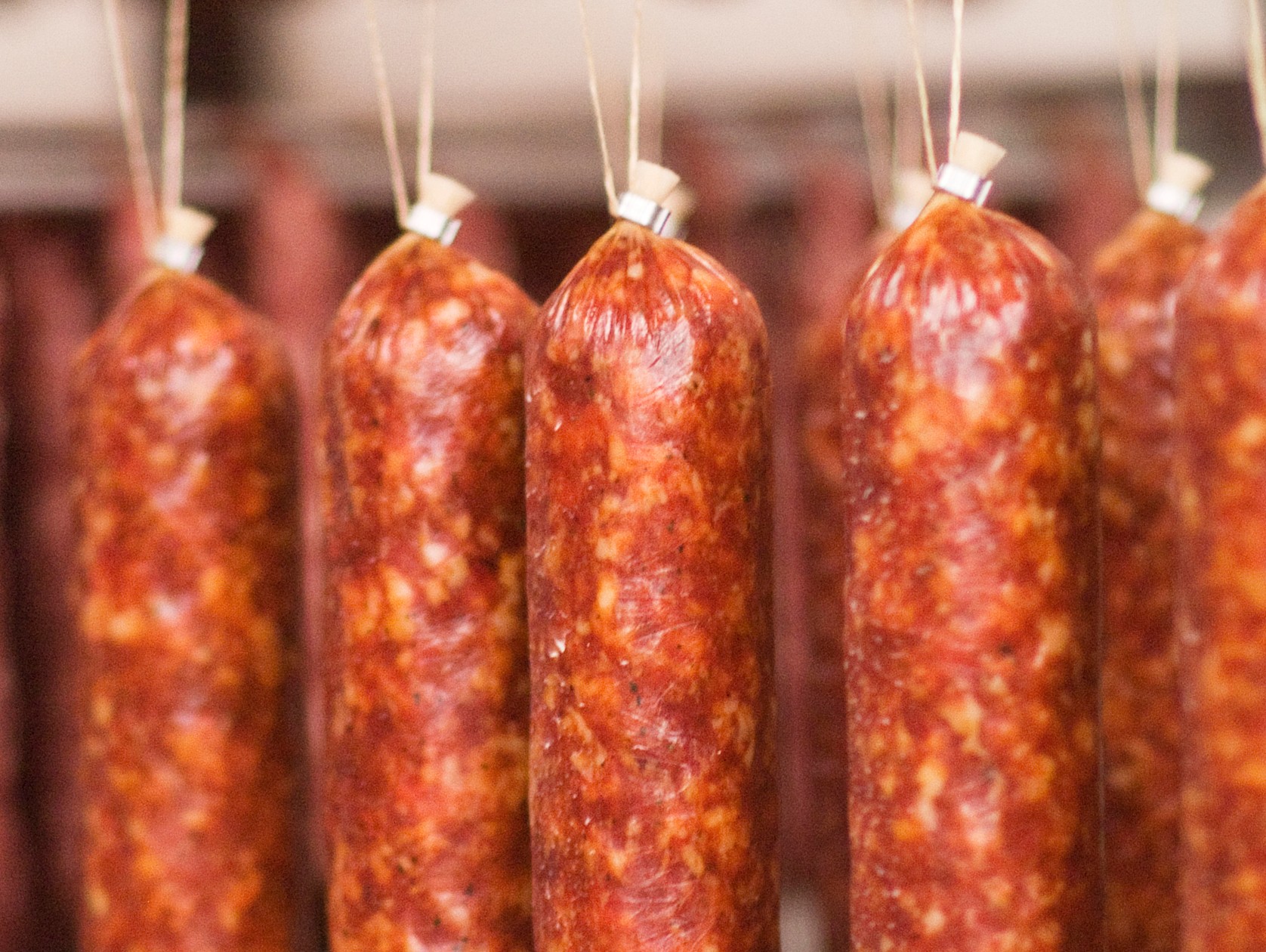
The phenomenon of ‘preserving’ food is centuries old. Traditional preservation methods, especially of meat and fish, include curing, smoking, boiling and pickling. Such techniques have given us delicious favourites such as stockfish, beef jerky and biltong. And of course: dry sausage.
Today, the management of the company Huls is in the capable hands of the worstmeesters (‘sausage masters’) Henk Koster, Arjan Zijlema and René Teerlink, known respectively as ‘the Soul’, ‘the Foundation’ and ‘the Inspiration’ of Huls. Between them they have more than 80 years of experience in producing dry sausage. We sat down for a chat with the three cheerful worstmeesters (accompanied by platefuls of tasty products to sample).
The sausage-making origins of Huls can be traced back to 1931, the year in which Henk Huls opened his own traditional butcher’s operation in Vlagtwedde, in the Dutch province of Groningen. In 1966 he gave his son Willy permission to produce dry sausage under the Huls company name. First with ‘Groninger Metworst’ and later with ‘Boerenmetworst’, Willy widened his reach by approaching butchers in Vlagtwedde and the surrounding area, and as far afield as the province of Drenthe, to sell his dry sausage products – thus laying the foundation for today’s company. In 1970 the company moved to a former school in the village and converted it into a production facility. Today, from the canteen, employees have a great view of the surrounding countryside. The factory processes an impressive 60 tonnes of meat into sausage every week, producing approximately 500,000 end products. “The majority of the products are sold in the northern provinces of The Netherlands,” says Henk. “And that’s where Huls’ roots lie. But we’re also noticing an ever-growing demand for our products from throughout the rest of the country.”
Just like Willy Huls, Berend Koster set up a sausage-making company, and he too visited independent shopkeepers as a way of selling his wares. Huls and Koster came across one another on their travels, and decided to join forces. Huls acquired Koster, which is why the company continues to produce and sell Koster sausages alongside its Huls sausages to this day. In addition to the factory in Vlagtwedde, Huls also has a dry sausage production facility in Lichtenvoorde. Together the two companies make up the Business Unit Huls – part of the Zwanenberg Food Group, which is one of the leading European producers and exporters of meat products and canned meat.
“The meat used in making our sausage products must meet specific requirements,” continues Henk Koster. “It must come from healthy and well-fed animals that are not too young. The meat needs to be firm and dry, and the fat must not be too oily. In order to ensure good salt absorption and the right curing process it’s also important for the pH value not to be too low. Hygiene is of great importance in all phases of our production process because dry sausage is a raw product.”
“When making dry sausage, any kind of intestines can be used as a casing for the sausage meat, providing they are porous,” explains Arjan Zijlema. “That’s because the sausage must be able to ‘breathe’ and expel moisture through the casing. Dry sausage is typical for this region. The seasoning, temperature, relative humidity and air speed all influence the ultimate flavour and bite, and vary for each different type. Here, we keep a close eye on all those aspects using an advanced system. For example, our local ‘Groninger’ sausages are characterised by a significant use of cloves, which were traditionally added to the sausage as a preservative. And our ‘Drentse Koster’ sausages have a distinctively shrivelled appearance due to the short curing time and intensive drying at a high temperature.”
‘The seasoning, temperature, relative humidity and air speed all influence the ultimate flavour and bite’
“We also make Mediterranean-style dry fermented sausages,” adds René. “They are air-dried and cured very slowly to allow the growth of the natural mould that is common on cheese and sausages from southern European countries.”
“Out of all our sausages, the ‘Sticks’ have the highest dehydration percentage,” continues Arjan. “They lose as much as 60 percent of their weight during the intensive drying process. They have a fine texture, are made from the fresh meat of older pigs and are seasoned using a flavoursome blend which includes pepper and coriander.

Snack sausages like the ‘Huls Sticks’ and the ‘Huls Boerenjongens’ are produced to be ‘skinless’ so that they are ready to eat. The natural casing is made from animal tissue: collagen.” The company’s ‘Fryske Knipwoarst’ sausages, which take their name from the metal clip used at each end of the natural casing made from intestines, are produced in long strings which can be cut to release individual sausages. “It’s typically Frisian to smoke the sausage on peat after curing it,” explains Arjan. “In combination with flavourings such as pepper, mace and ginger, that produces the specific ‘Frisian’ taste.”
One thing that all Huls sausages have in common is that they are ideal for serving as drink accompaniments – all three of the worstmeesters are in hearty agreement about that.
Source: Huls